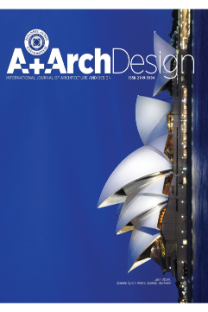Investigation Of Knowledge About Building Deconstruction Concepts Of Companies In The Field Of Urban Transformation İn Turkey
Buildings are demolished uncontrolled without questioning the disassembly and recycling possibilities in demolition activities realized within the scope of urban transformation. As a result of the demolition works carried out mostly by using traditional methods, too much constructional waste is generated and left to nature. This situation causes important environmental and health problems and increases the consumption of energy and natural resources. It is necessary to produce innovative and environmentally solutions in order to reduce the negative consequences of demolition activities within the scope of urban transformation.
The concept of deconstruction, which is considered as an alternative for the demolition of buildings, is one of the solutions evaluated in this context. It is possible to eliminate or reduce the negative effects of demolition activities by using building deconstruction methods in the field of urban transformation. However, the applicability of appropriate methods depends on the knowledge of the companies serving in the field of urban transformation about the concept and methods of deconstruction, and their level of having appropriate infrastructure and equipment. In this context, a field study was conducted in order to determine the knowledge levels of firms operating in the field of urban transformation and their general approach to the concept of deconstruction. In the study, questions were asked to company officials with the survey method, the answers were analyzed with the SPSS program, and the findings were obtained by using the frequency and percentage distribution, average and standard deviation values of the answers. Findings were evaluated using the pairwise comparison method. As a result of the study, a general situation was determined about the knowledge and implementation levels of the companies on building deconstruction.
Keywords:
Building deconstruction, , Urban transformation, , Demolition, , Disassembly , Recovery,
___
- Reference1 Ersoy, M. (2012). Urban Planning, Ansiklopedik Sözlük, Ninova Yayınları, (S.223).
- Reference2 TMMOB, (2011). Türkiye’de Deprem Gerçeği ve TMMOB Makine Mühendisleri Odası’nın Önerileri Oda Raporu.
- Reference3 URL-1. www.csb.gov.tr>, last accessed on 12.05.2019.
- Reference4 Norris, C. (2002). Deconstruction Theory and Practice, Routledge, London.
- Reference5 Esin, N. (1989). "Mimariye Değişik Bir Bakış: Dekonstrüktivist Mimari", Yapı, S.90, sf.49-51
- Reference6 Guy, B. & Shell, S., (2002). Design for Deconstruction and Material Reuse, Proceedings of the CIB Task Group 39, CIB Publication 272, Karlsruhe, Germany.
- Reference7 Storey J., Gjerde M., Charleson A., & Pedersen M. (2003). The State of Deconstruction in New Zealand, 2003-Synopsis, Centre for Building Performance Research, Victoria University, New Zealand.
- Reference8 Chini, A., & Nguyen, H. (2003). Optimizing Deconstruction of Lightwood Framed Construction. Proceedings of the 11th RinkerInternational Conference, Deconstruction and Materials Reuse (s. 311-321). Gainesville, Florida, USA: CIB Publication 287.
- Reference9 Macozoma, D. (2001). Building Deconstruction, CSIR Building and. South Africa: CIB publication.
- Reference10 ILSR. (2004). (Institute for Local Self-Reliance), Environmental Benefits.www.ilsr.org/recycling/environmentalbenefits.htm.
- Reference11 Dillman, D. A. (1978). Mail and Telephone Surveys: Total Design Method. Newyork: John Wiley and Jons.
- Reference12 TURKSTAT, 2011.Population and Housing Survey.
- Reference13 URL-2.www.aa.com.tr/tr/turkiye/turkiyede-2012den-bu-yana-saptanan-197-bin-20-riskli-yapidan-165-bin-556si-yikildi/1717557#:~:text=Ge%C3%A7en%20y%C4%B1l%209%20bin%20647,343%20ile%20Konya%20takip%20etti, last accessed on 30.01.2020.
- ISSN: 2149-5904
- Başlangıç: 2015
- Yayıncı: İstanbul Aydın Üniversitesi
Sayıdaki Diğer Makaleler
A Critical Analysis of Housing Affordability Literature: Turkish Housing Experience
Disaster Risk Management of Cultural Heritage in Urban Areas: The Case of Turkey
Elective Courses as a Dialogic Environment: Sustainable Design in Interior Architecture Course
Historic Background and Architecture of Çanakkale Martyrs Monument
